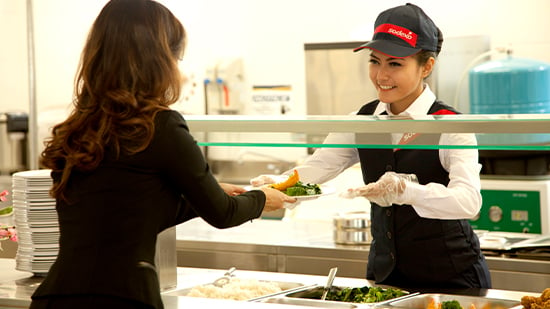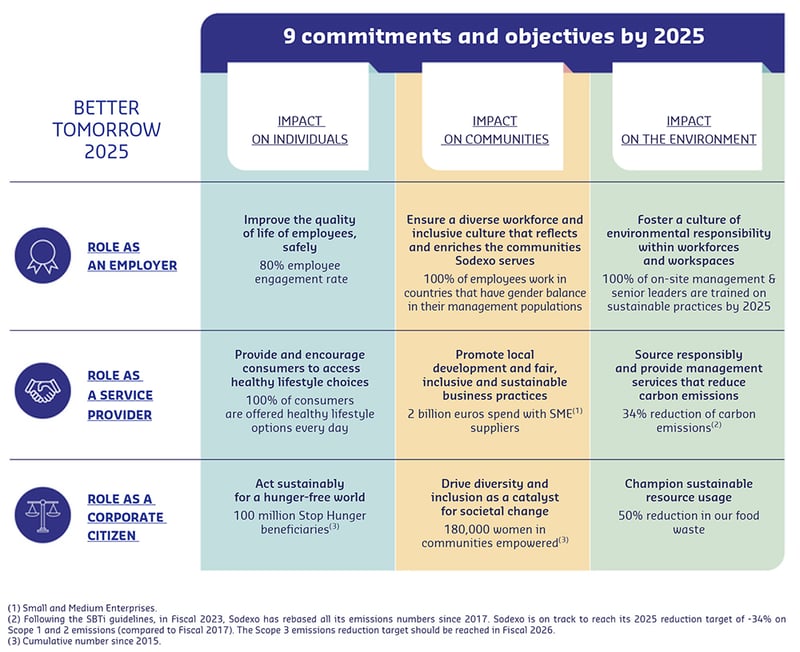Our Corporate Social Responsibility commitments and progress

We are committed to having a positive impact on Individuals, Communities and the Environment. We identify our main challenges prioritize the key corporate responsibility issues and their impacts through our materiality matrix.
On Communities
We create diverse and inclusive workplaces, achieving gender balance in management, promoting fair and sustainable practices with a global goal of 25% spend o small businesses and empowering women for social change nationwide

On the Environment
W're dedicated to fostering an environmentally responsible cuture, training 100% of site managers and senior leaders in sustainable practices, reducing caro emissions by 34% and targeting a 50% reduction in food waste at key sites representing 85% of raw material cost.
Our progress
Our role as an Employer
Our impact on individuals
82.5% employee engagement rate
80%Our Impact on Communities
70.5% of Sodexo’s employees work in countries that have gender balance in their management populations
100%Our Impact on the environment
17.4% of on-site management & senior leaders are trained on sustainable practices
100%
Objectives
Progress
United Nations Sustainable Development Goals:

